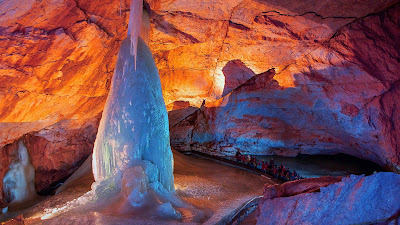 |
| Hallstatt Salt Mines, Austria / Permian Salt Diapir |
Along with diversified cephalopod fauna — orthoceratids, nautiloids, ammonoids — we also see gastropods, bivalves, especially the late Triassic pteriid bivalve Halobia (the halobiids), brachiopods, crinoids and a few corals. We also see a lovely selection of microfauna represented.
Parts of the massif also lie in the state of Salzburg, leading to the mountain being referred to as the Drei-Länder-Berg or three-state mountain. Seen from the north, the Dachstein massif is dominated by the glaciers with the rocky summits rising beyond them. By contrast, to the south, the mountain drops almost vertically to the valley floor. The karst limestones and dolomites were deposited in our Mesozoic seas. The geology of the Dachstein massif is dominated by the Dachstein-Kalk Formation — the Dachstein limestone — which dates back to the Triassic.
 |
| Hallstatt and the Hallstatt Sea, Austria |
The Hallstatt mine exploits a Permian salt diapir that makes up some of this area’s oldest rock.
The Hallstatt-Meliata Ocean was one such back-arc basin. As it continued to expand and deepen during the Triassic, evaporation ceased and reefs flourished; thick limestone deposits accumulated atop the salt. When the Hallstatt-Meliata Ocean closed in the Late Jurassic, the compression squeezed the low-density salt into a diapir that rose buoyantly, injecting itself into the Triassic limestones above.
The Hallstatt salt diapir and its overlying limestone cap came to rest in their present position in the northern Austrian Alps when they were shoved northward as nappes (thrust sheets) during two separate collision events, one in the Cretaceous and one in the Eocene, that created the modern Alps. It is from the Hallstatt salt diapir that Hallstatt, like so many cities and towns, gets its name.
Deposits of rock salt or halite, the mineral name of sodium chloride with the chemical formula of NaCl, are found and mined around the globe. These deposits mark the dried remains of ancient oceans and seas. Names of rivers, towns and cities in Europe — Salzburg, Halle, Hallstatt, Hallein, La Salle, Moselle — all pay homage to their connection to halite and salt production. The Greek word for salt is hals and the Latin is sal. The Turkish name for salt is Tuz, which we see in the naming of Tuzla, a salt-producing region of northeastern Bosnia-Herzegovina and in the names of towns that dot the coast of Turkey where it meets the Black Sea. Hallstatt with its salt diapir is no exception.
Space is at a minimum in the town. For centuries, every ten years the local cemetery exhumes the bones of those buried there and moves them to an ossuary to make room for new burials. The Hallstatt Ossuary is called Karner, Charnel House, or simply Beinhaus (Bone House). Karners are places of secondary burials. They were once common in the Eastern Alps, but that custom has largely disappeared.
 |
| Hallstatt Beinhaus Ossuary, Hallstatt, Austria |
Each is inscribed and attached to a record with the deceased's name, profession and date of death. The Bone House is located in a chapel in the basement of the Church of Saint Michael. The church dates from the 12th century CE.
The region is habitat to a variety of diverse flora and fauna, including many rare species such as native orchids, in the wetlands and moors in the south and north.
Linked by road to the cities of Salzburg and Graz, Hallstatt and its lake were declared one of the World Heritage sites in Austria in 1997 and included in the Hallstatt-Dachstein Salzkammergut Alpine UNESCO World Heritage Site. The little market village of Hallstatt takes its name from the local salt mine.
 |
| Hallstatt, Salzkammergut region, Austria |
Above the town are the Hallstatt Salt mines located within the 1,030-meter-tall Salzburg Salt Mountain. They are accessible by cable car or a three-minute journey aboard the funicular railway. There is also a wonderful Subterranean Salt Lake.
In 1734, there was a corpse found here preserved in salt. The fellow became known as the Man in Salt. Though no archaeological analysis was performed at the time — the mummy was respectfully reburied in the Hallstatt cemetery — based on descriptions in the mine records, archaeologists suspect the miner lived during the Iron Age. This Old Father, Senos ph₂tḗr, 'ɸatīr 'father' may have been a local farmer, metal-worker, or both and chatted with his friends and family in Celtic or Proto-Celtic.
Salt mining in the area dates back to the Neolithic period, from the 8th to 5th Centuries BC. This is around the time that Roman legions were withdrawing from Britain and the Goths sacked Rome. In Austria, agricultural settlements were dotting the landscape and the alpine regions were being explored and settled for their easy access to valuable salt, chert and other raw materials.
The salt-rich mountains of Salzkammergut and the upland valley above Hallstatt were attractive for this reason. The area was once home to the Hallstatt culture, an archaeological group linked to Proto-Celtic and early Celtic people of the Early Iron Age in Europe, c.800–450 BC.
 |
| Bronze Age vessel with cow and calf |
In the 19th century, a burial site was discovered with 2,000 individuals, many of them buried with Bronze Age artefacts of amber and ivory.
It was this find that helped lend the name Hallstatt to this epoch of human history. The Late Iron Age, between around 800 and 400 BC, became known as the Hallstatt Period.
For its rich history, natural beauty and breathtaking mountainous geology, Hallstatt is a truly irresistible corner of the world.
Salzbergstraße 1, 4830 Hallstatt. https://www.salzwelten.at/en/home/
Photo: Bronze vessel with cow and calf, Hallstatt by Alice Schumacher - Naturhistorisches Museum Wien - A. Kern – K. Kowarik – A. W. Rausch – H. Reschreiter, Salz-Reich. 7000 Jahre Hallstatt, VPA 2 (Wien, 2008) Seite 133 Abbildung 6. Hallstatt Village & Ossuary Photos: P. McClure Photography ca. 2015.
Bernoulli D, Jenkyns HC (1974) Alpine, Mediterranean, and Central Atlantic Mesozoic facies in relation to the early evolution of the Tethys. Soc Econ Paleont Mineral Spec Publ 19:129–160
Bernoulli D, Jenkyns H (2009) Ancient oceans and continental margins of the Alpine-Mediterranean Tethys: deciphering clues from Mesozoic pelagic sediments and ophiolites. Sedimentology 56:149–190


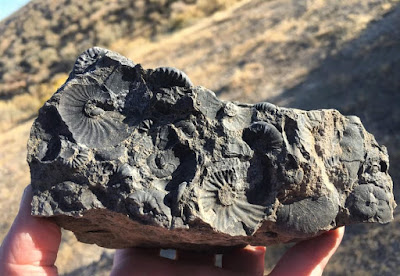
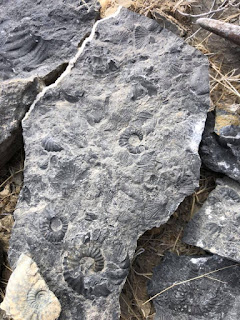
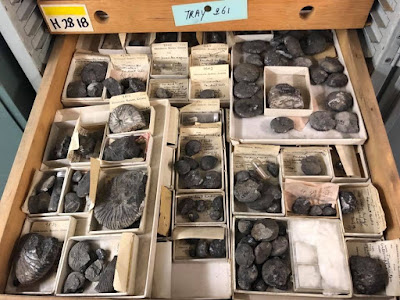






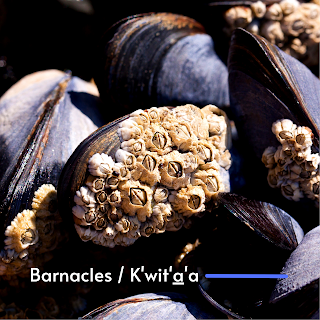

















.jpg)


